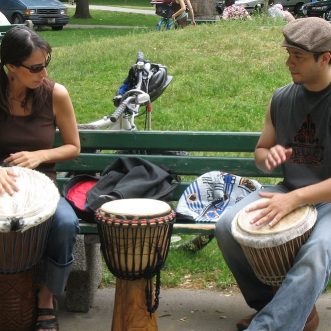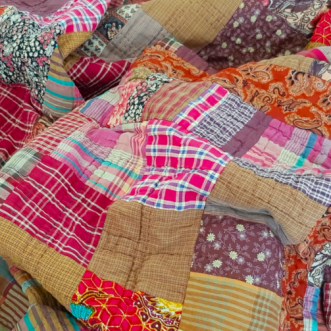
Letting go of the tiger
During that tiger-riding phase of growing your business, when you’re growing fast, when new opportunities are coming at you thick and fast, and it feels right to take as many of them as you can; it can feel like everything is out of control. It can feel like nothing is working as it should, so you have to be everywhere, supervising everything, checking everything, or the tiger will run away with you.
You might think that this would be the worst time to start writing down your Customer Experience Score.
You’d be wrong.
Because, by giving yourself space to get your music out of your head, you also give yourself space to think about how ‘doing things right’ can be made easier to achieve. Sometimes ridiculously so, with a ridiculously simple change, such as creating a Prop for others to use that literally helps them see through your eyes.
Because, as you write down what till now has only been playing inside your head, you see how the part you wrote for the violins is very close to what the violas will need, and the oboes, and with a few more tweaks, the clarinets. Suddenly, the job of getting it all down is much smaller than you thought.
And because, as you write the first few parts, and see how easy it is to get your Orchestra to play them beautifully, even when you’re not in the room, you realise that the next part you write is likely to work just as well, and the one after that, and the one after that. Suddenly, the job of getting it all down is far less urgent than you thought.
And so you realise that you can loosen your hold. That the tiger isn’t going to run away with you. That you can spend time building her a generous and beuatiful reserve in which she can flourish.
You’ll never be done of course, but now you know how easy it is, you can enlist your team to help you.
And once they know as much as you do about how your business should work to make and keep its promises to customers, you can step back and enjoy watching your tiger become a streak.
Discipline makes Daring possible.
It also makes it easier.









One of the first things a professional de-clutterer will do is get rid of ‘duplicates’.
This is a strictly utilitarian view, that says one cake-slice is much like another, and ignores all the possible reasons why you might end up with 10 of them.
You might have received one as a gift, or inherited one from a parent or friend. You might have had to rush out and buy new because you couldn’t put your hand on one just when you needed it. You might have just liked the look of it.
Or you might simply be satisfying that very human urge for repetition with variation that encourages us to build collections.
All that makes choosing ‘the one’ that’s going to stay, emotional and just a bit stressful, especially if you’re made to feel judged by your inability to maintain a minimal lifestyle.
Which might be one reason I dislike de-cluttering TV programmes so much.
As you grow your small business, working out what your clients really want, and finding new ways to delight them, you acquire business processes like I acquire cake-slices.
You inherit them from your previous workplace, or maybe even the previous owner. A new employee gifts you a shiny new one. You cobble a new one together in a rush, because you can’t quite put your hand on the one you did earlier when you need it.
Or, as happens when we’re in the thick of it, it’s simply easier to focus on the differences between cases rather than the similarities.
Luckily, business processes aren’t like cake slices. We don’t have to choose.
We can combine the best features of all of them to create one beautiful and super-useful process, with all the emotion built in, and still with room enough to deal with a new kind of cake.
That means that when I work with clients, I can start by assuming we’re going to keep everything, and work on capturing and streamlining the most salient version – the one that happens most, or is the most difficult to hand over, or the most complicated.
Usually, by the time we’ve worked through that, the owner has realised that they don’t need all the others. This new process covers all the options.
We check to make sure of course. And if, on further inspection, it turns out we do need another version, we put that in place, reusing as much of the newly designed process as we can.
No stress. No agonising over what to keep and what to throw away. No being made to feel like you are in the wrong.
Just the relief of knowing that all that clutter is now out of your head, and out of the business too. Making it a calmer, clearer place to work for everyone, with added room for innovation.
Discipline makes Daring possible.
I’m Kirsten Gibbs, Boss Disappearer, and I can help you write your Customer Experience Score , to make your business easier to run, easier to grow and easier to build into a legacy you’ll be proud of.
Ask me how.